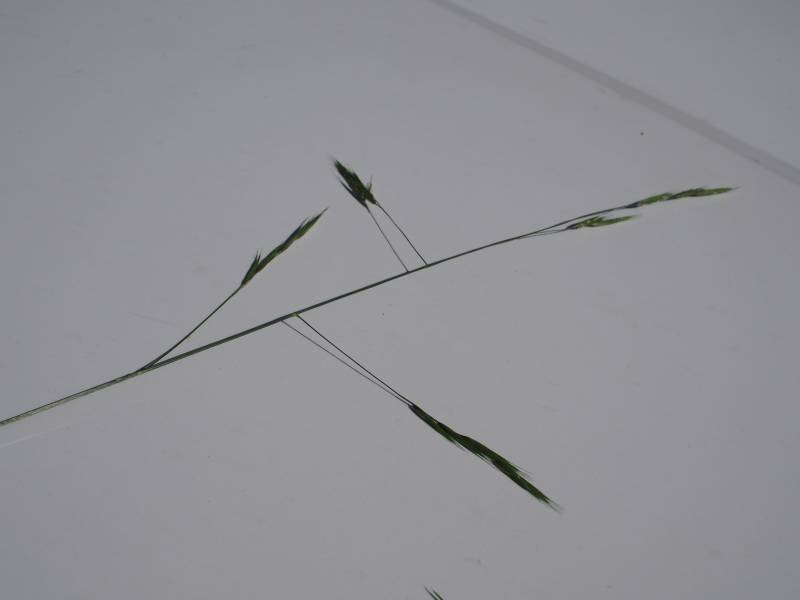Melica aristata
Melica smithii
bearded melic grass
Smith's melic grass
Sheaths closed to the top, glabrous to pubescent;
ligules 3-9 mm. long, truncate to obtuse, closed in front until split;
blades flat, lax, 5-10 mm. broad, with prominent, wide-spaced nerves.
Inflorescence an open panicle 12-30 cm. long, the branches solitary, distant, drooping, bearing a few spikelets above mid-length;
spikelets loosely 4- to 6-flowered;
rachilla joints about 3 mm. long;
glumes narrow, the first 5-6 mm. long, apparently 1-nerved, the second 8-9 mm. long, distinctly 3-nerved;
lemmas strongly 7-nerved, about 10 mm. long, bifid at the apex for about 1 mm. with an awn 4-7 mm. long from between the teeth;
paleas 2/3 as long as the lemmas;
spikelets with 2-several perfect flowers, but the upper 2-4 flowers sterile, forming a spindle-like body about 5 mm. long.
Melica aristata
Melica smithii
- Local floras:
CA,
OR,
WA
- Local Web sites:
CalFlora,
CalPhotos,
Flora NW,
PNW Herbaria
WildflowerSearch
iNaturalist (observations)
USDA Plants Database
- LBJ Wildflower Center
- SEINet
- Plants of the World Online
- Encyclopedia of Life
- Wikipedia
- Google Image Search
- Local floras:
BC,
OR,
WA
- Local Web sites:
Flora NW,
PNW Herbaria
WildflowerSearch
iNaturalist (observations)
USDA Plants Database
- LBJ Wildflower Center
- SEINet
- Plants of the World Online
- Encyclopedia of Life
- Wikipedia
- Google Image Search


